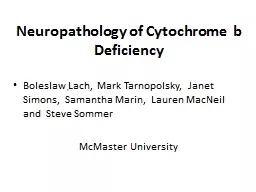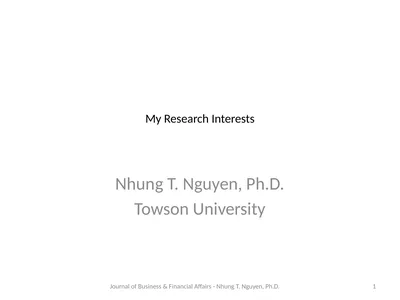PPT-Lananh Nguyen, M.D. Division of Neuropathology
Author : Hardrocker | Published Date : 2022-08-03
University of Pittsburgh Medical Center 72yearold male with fever of unknown origin Patient complains of fluctuating fevers for the last 3 weeks He has diplopia
Presentation Embed Code
Download Presentation
Download Presentation The PPT/PDF document "Lananh Nguyen, M.D. Division of Neuropa..." is the property of its rightful owner. Permission is granted to download and print the materials on this website for personal, non-commercial use only, and to display it on your personal computer provided you do not modify the materials and that you retain all copyright notices contained in the materials. By downloading content from our website, you accept the terms of this agreement.
Lananh Nguyen, M.D. Division of Neuropathology: Transcript
Download Rules Of Document
"Lananh Nguyen, M.D. Division of Neuropathology"The content belongs to its owner. You may download and print it for personal use, without modification, and keep all copyright notices. By downloading, you agree to these terms.
Related Documents














